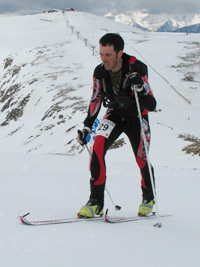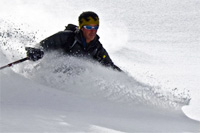There must have been very few people in the skimo racing community that would have picked Max Taam and John Gaston to dominate last season’s (2012/13) American racing circuit the way they did.
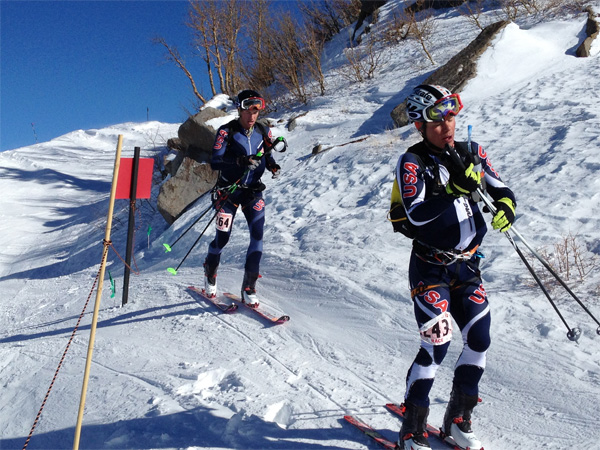
On top of their domination in the US they also achieved a historic finish for North American men at World Championships (not including relay race results). They finished 10th in teams race at the 2013 Worlds in France! Previous NA best was a 16th place by Canadian’s Reiner Thoni and Andrew McNab in teams race in 2011.
So that’s who we are talking to today 😉
Q: Let’s start from the beginning: When did you start racing ski mountaineering?
Max: My first race was the Aspen Highlands Inferno in 2006. The race goes up the boot-pack on Highlands ridge and down the center of the bowl. A year or two after this I started doing a few of the Colorado Ski Mountaineering Cup races (COSMIC).
John: 2008 Aspen Highlands Inferno was my first uphill/downhill ski race. At the time I couldn’t believe how fast Mike Kloser was compared to everyone else, so I kind of made that my goal to win, which happened in 2010.
I was still very much a downhill-focused skier though at that point, and it wasn’t until 2012 that I finally started racing skimo. I skied myself of course and DNF’d my first race at Winter Park, then got a serious ass kicking a couple weeks later at the Teva Games in Vail. And then I was hooked.
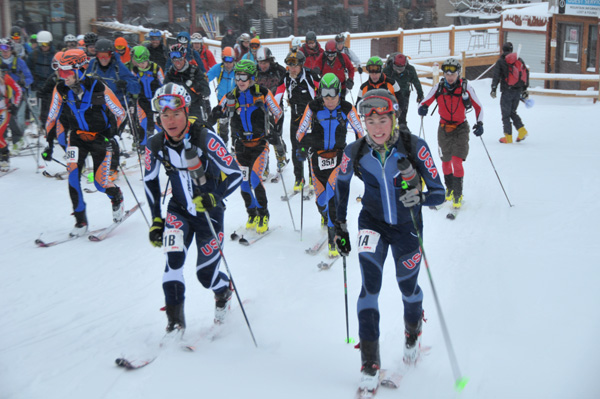
Max: I have done all sorts of endurance racing and skimo is definitely my favourite. I started with crew in high school and college, and since then have competed road biking, mountain biking, and trail running.
John: I grew up mountain biking, dirt biking, and skiing in New England. But I think like most kids I wasn’t really into the endurance side of these sports; I liked going downhill but hated climbing so much. It really wasn’t until right after graduating college that I started doing endurance sports for more than an hour at a time.
Q: What gear did you do your first skimo races on? Did you have very light gear right away?
Max: For my first Highlands inferno I was on Garmont Adrenaline boots and Stockli Stormrider DP alpine skis.
By the time I did my first real skimo races I had Scarpa F1 boots, Volkl Snowwolf skis, Dynafit Comfort bindings, and full length and width BD synthetic skins.
John: My first Highlands Inferno races were all done on full alpine gear – Full Tilt boots and 4FRNT EHP’s mounted with Salomon STH 16’s.
But for skimo I definitely had very light gear right off the bat. It wasn’t really a question for me whether it was worth the investment or if I was even going to like the sport. Having sat out nearly all of the 10/11 winter with a back injury and watched Max and my brother Pete getting more into skimo racing, I knew right away that that was going to be my sport. It just made sense, even though I’d never done it, and I wanted to be competitive right away.
Q: Max, I know you from previous racing seasons and World Champs in 2010 and 2011. You have been always fast but obviously you turned some switch to really dig into skimo. When did that happen?
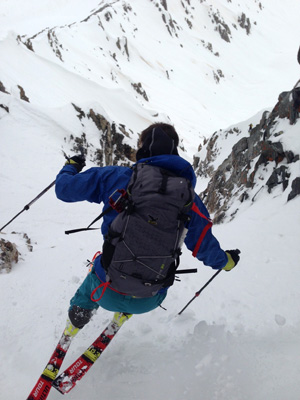
Then having John around Aspen last winter definitely pushed me to get faster. The experience I have gained over my years of racing, have made me a smarted racer. I dramatically decreased the amount of meat in my diet at the start of last summer, which pretty quickly made me a few pounds lighter.
Q: When did you guys started to train together for ski mountaineering races?
John: Max and my brother Pete were training partners way before I came into the mix. He was over in Cham the 11/12 winter when I started racing, so it wasn’t until last season that we ever trained together.
Still, we do most of our training alone just due to schedules and what not. But it’s definitely really fun to have someone to motivate you if you’re not feeling it that day. But we didn’t really need to train a lot together to be good racing together – we knew we were very compatible for team racing.
Q: Where do you live and train?
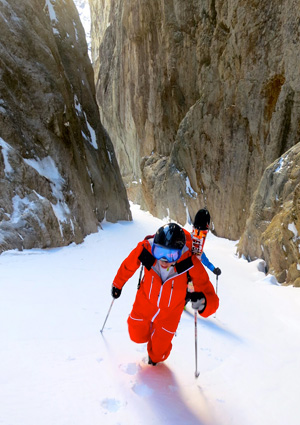
John: I live in Aspen, and Strafe’s office is right in the Highlands base village, so most of my training is done around Ajax and Highlands.
Q: Do you have any sponsors or do you work to support your racing?
Max: I work as a ski patroller on Aspen Mountain. I also have a number of sponsors that make a big difference in my success: Strafe Outerwear, SCARPA, Ski Trab, Oakley, Aspen/Snowmass, Honey Stinger, and POC.
John: I work for STRAFE Outerwear designing and developing some sweet outerwear, but I’m lucky to have a pretty flexible schedule, which means as long as I am efficient I get to ski almost every day.
This sport ain’t cheap and none of the racing would be possible without great support from STRAFE, Oakley, Scarpa, Ski Trab, Honey Stinger, POC, Aspen/Snowmass, and the Aspen Brewing Company. Thanks guys!
Q: You guys are both great skiers. What gear did you race on last season (skis, bindings, boots)? Any changes for this year?
Max: Last year I raced on Dynafit boots, Dynafit bindings, and Atomic skis. This year I will be racing on SCARPA Alien 1.0 boots, Ski Trab TR Race binding, and the Ski Trab Gara Aero World Cup ski.
I love equipment that I don’t have to hold back on, on the descents. I have been skiing in the SCARPA Alien 1.0 since March and have been very impressed.
The first pair of race skis I had were made by Ski Trab and I was amazed at how durable they were and how well they skied, so I am really excited to go back to them. I am also really looking forward to touring and training on the Ski Trab Magico ski.
» Check out the comparison pages for what Max will be racing on this year – lightest boots, skis, bindings.
John: Last year I was on Dynafit boots and binders, and Atomic skis, but I’m really stoked to try out Scarpa Aliens 1.0 this year. They weigh the same as the Evo’s but the walk mode is ridiculous. I weigh a bit more than a lot of racers too so I’m definitely excited for the stiffer support they offer on the downhill.
I’ll also be on Ski Trab Gara Aero World Cup skis and TR Race bindings. It’s pretty cool to be on the same equipment used by the majority of top world cup racers over in Europe.
Q: John, you won all three US qualifying races for the 2013 World Champs, including the Nationals at Jackson. Were you surprised? What did it change or confirm for you?
John: I was a little surprised. I knew I had an outside shot, but there are so many variables in skimo that can and do go wrong all the time.
I didn’t have a lot of racing experience under my belt but what I did have was very helpful. I mean the 2012 Power of Four was one of the most brutal races anyone had ever experienced, so that alone gave me confidence that if I kept my cool I could get a good result.
But to follow up Nationals with 3 more race wins in a week (there was a Highlands town series race on Thursday before Sunlight), that was really cool. In the past it didn’t seem like there were consistent winners, so to train and prepare and work out the details to try and minimize all those variable factors, and then see it really work, and work well, was great.
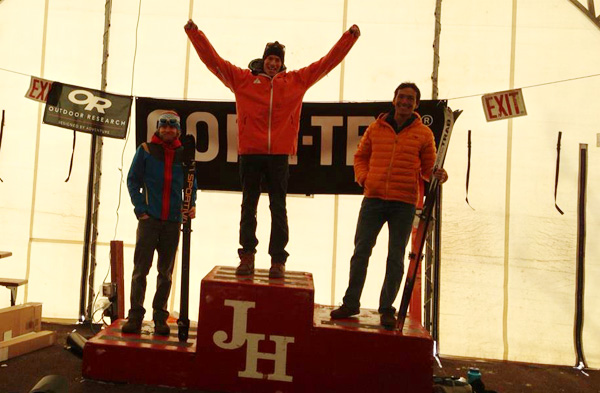
Max: I typically struggle to find my speed for the first month of the season. I was really excited to find it by the end of January and maintain it through the end of the season. Worlds were definitely my biggest goal, and finishing 10th in the teams race with John was the highlight.
Q: So let’s talk about the 10th place at 2013 Worlds then. I label it as a superb result! How was that day? What were your hardest moments?
Max: We were pretty slow on the first climb, because I usually struggle early on, especially at lower altitudes. We were probably in 25th or so at the top of the first climb. From the first descent to the finish we continuously made up ground both skiing and climbing.
John and I are usually some of the faster skiers, which always makes things more fun.
John: That day was hard! I felt great from the gun, but kind of over did it on the first climb and felt pretty bad the rest of the race. It was just slow and steady after that I really just had to follow Max’s heels for the middle climbs. Not my best feelings on the up, but we were cruising on the descents, passing a lot of teams and having a blast.
I also really liked the downhill ridge running section and the crampon section. That was my first time racing with crampons and it definitely made it way more interesting. But I was totally blown by the final skate and really happy to see the finishing chute!
» Here’s a short report from that day.
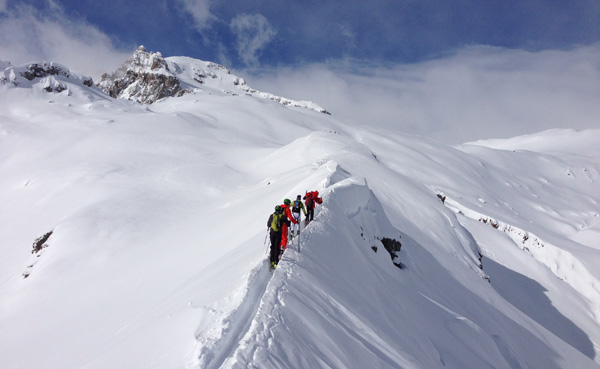
Max: I really like the individual race, even though it’s usually a bit short for me. As with the teams race I fell back early on, but made up ground during the second half of the race. I didn’t have a great sprint race, but it’s something I would like to do some specific training for in the future.
John: The individual race was definitely my favourite, mainly because the course was still really cool, and I just felt and raced a lot better. It started off just crazy fast, and the intensity stayed so high the whole time. I know the 31st place isn’t nearly as impressive sounding as the 10th from teams, but I was really proud of that.
And the relay was way more exciting than I was expecting. I didn’t think too much of it beforehand since it was a ten-minute effort, but that was some of the most pain I have ever experienced in my life.
Everything about the Worlds is really incredible if you’re coming from the grassroots American scene. The courses, the fans, the atmosphere – all of it is next level!
Q: Do you plan on racing team races together in the future?
Max: Yes, I feel like our skills complement each other really well.
John: For sure. I think we work very well together, and it’s especially nice to be the same speed on the descents. Climbs are one thing – if someone’s going faster you can tow and vice versa, but that’s not possible on descents and it would suck to have to hold back.

Max: I raced the Pierra Menta in 2012 with Pete Gaston, John’s brother. I would love to go back and race it again.
John: I would love to race the Pierra Menta.
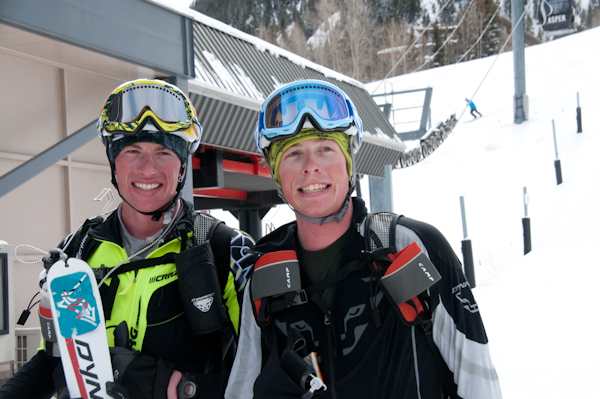
Max: I spent September in France guiding road bike trips for Cycle the Alps. My friends Liz and Miles Smart, who are mountain guides in Chamonix, France, started the company, and I am excited to be apart of it. This years trips brought me to some incredible places and were a great few weeks of high volume training.
John: I actually wasn’t over there this summer – my brother Pete was guiding mountain bike trips over there so maybe you were thinking of him! 😉
I did take a trip over in the Fall though to go to Oktoberfest! I love Europe though and definitely plan on spending more time over there in the future.
Q: How do you train in the summer? Do you also race?
Max: I used to do a lot of bike racing. Since I started focusing more on skimo a few years ago, I reduced my summer racing to a select few mountain biking and trail running races.
John: Summer is all about mtb racing. I end up racing the same amount summer and winter.
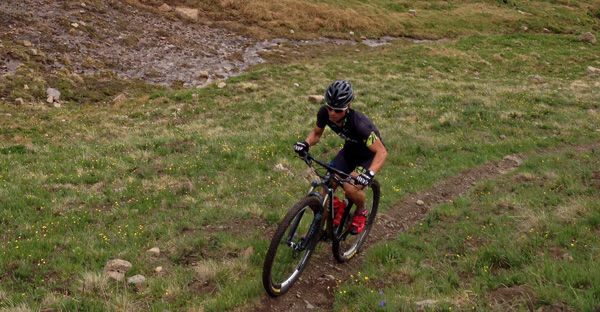
Q: What does your racing calendar looks like for this season, only US races or will you visit foreign countries as well?
Max: I am excited about our growing US schedule, in particular the 3 ISMF sanctioned races in the US. I would love to race in Europe again this winter, if the opportunity arises. I would really like to make it up to Canada sometime to race as well.
John: Not totally sure yet. I’m not going to start racing until January, when it’s Jackson/Targhee/Sunlight time. I’d love to go to Europe and race some World Cups after that, but I think Pierra Menta may take priority. And I guess it’s about time Max and I give the Grand Traverse a go, even though the race itself doesn’t really appeal to me from a skiing standpoint.
Q: Do you have any goals in the backcountry? Descents, traverses…?
Max: I would like to do some big traverses in Colorado. It’s a pretty new thing for Colorado. We don’t always have the right conditions, but when we do, I think some epic days are possible.
John: I want to get more comfortable in bigger, more technical mountains. That’s always been a weak point of mine, as I have zero climbing background. That pretty much means following Pete and Max around on their objectives and trying not to kill myself.
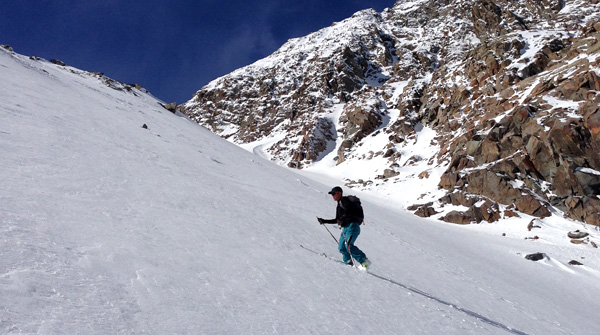
Max: I really like to preview courses. This allows me to know exactly what I have coming up on every climb and to ski the descents faster with more confidence.
John: I think eating and drinking is really important in any race over an hour. Maybe it’s because a lot of racers come from running backgrounds, where apparently starving yourself is the norm, but most skimo racers don’t eat or drink nearly enough to sustain their level of intensity.
For downhill, I think people who spend most of their time in the backcountry should vary it up and ski the resort once in awhile. Ski Areas allow you to ski much harder, steeper terrain in a wider variety of conditions, at faster speeds, more often.
Q: How would you advise an absolute skimo racing novice to start besides just jumping into a race? Give me three most important things in order of priority.
Max:
- Focus on good skinning technique. You can beat far fitter people, with good technique.
- Practice a few transitions before the race. They don’t need to be perfect, but this will help you relax in the transitions.
- Be familiar with the course and race format, so that there are no big surprises.
John:
- Make sure you have comfortable boots! Nothing turns people off from skinning like massive blisters.
- Build up some solid base fitness. Racing is more fun when it doesn’t feel like you’re dying the whole time.
- Go touring with friends, preferably some that have a little racing experience. You’ll learn basic race technique in a way more fun and casual manner.
» For more skimo tips check out this article – 10 Quick Tips to Improve Your Skimo Racing
Q: A bit off topic now: What did you wanted to be when you were 15? And what do you want to be now?
Max: When I was 15, I knew that I loved skiing. Now, I get to spend most of my day on skis!
John: I wanted to be pro big mountain skier. I think that was the year MSP’s Ski Movie 3 came out. Seth Morrison was the coolest skier in the world (still is), and Hugo Harrison had just come onto the scene, skiing faster and harder than anyone. I wanted to do what they did. I guess I still do, but now I have this endurance itch that needs scratching, and sometimes gets in the way of the more fun aspects of the sport!


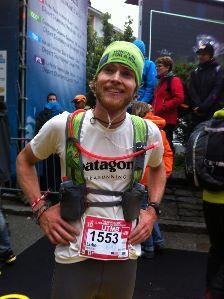
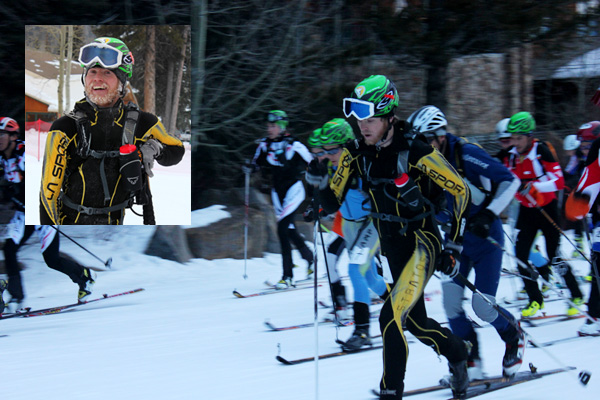
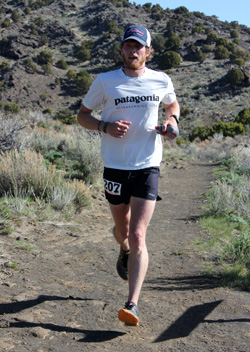
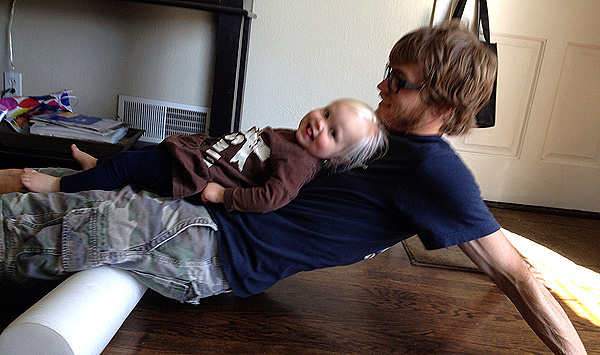
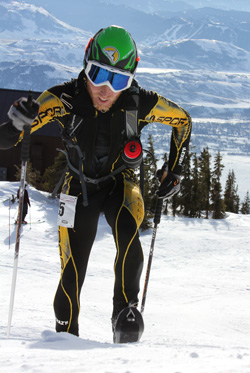 My biggest goal of the season is to qualify for the US team so I can go to race at the World Championships in France.
My biggest goal of the season is to qualify for the US team so I can go to race at the World Championships in France.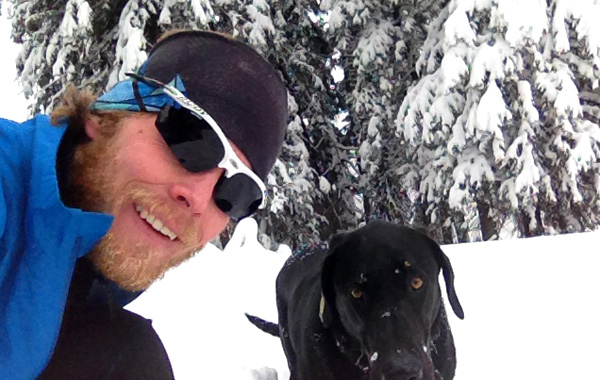
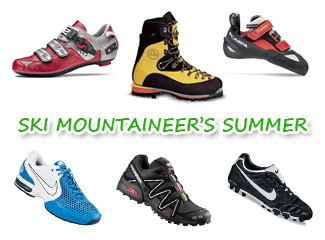 An old cycling wisdom says: “Tour de France is won in the winter!” It’s an interesting statement since the Tour is ridden in the heat of July.
An old cycling wisdom says: “Tour de France is won in the winter!” It’s an interesting statement since the Tour is ridden in the heat of July.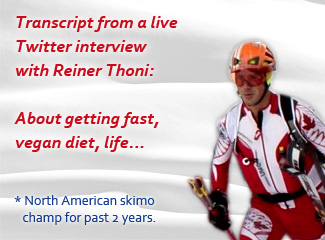 How to read the interview:
How to read the interview: